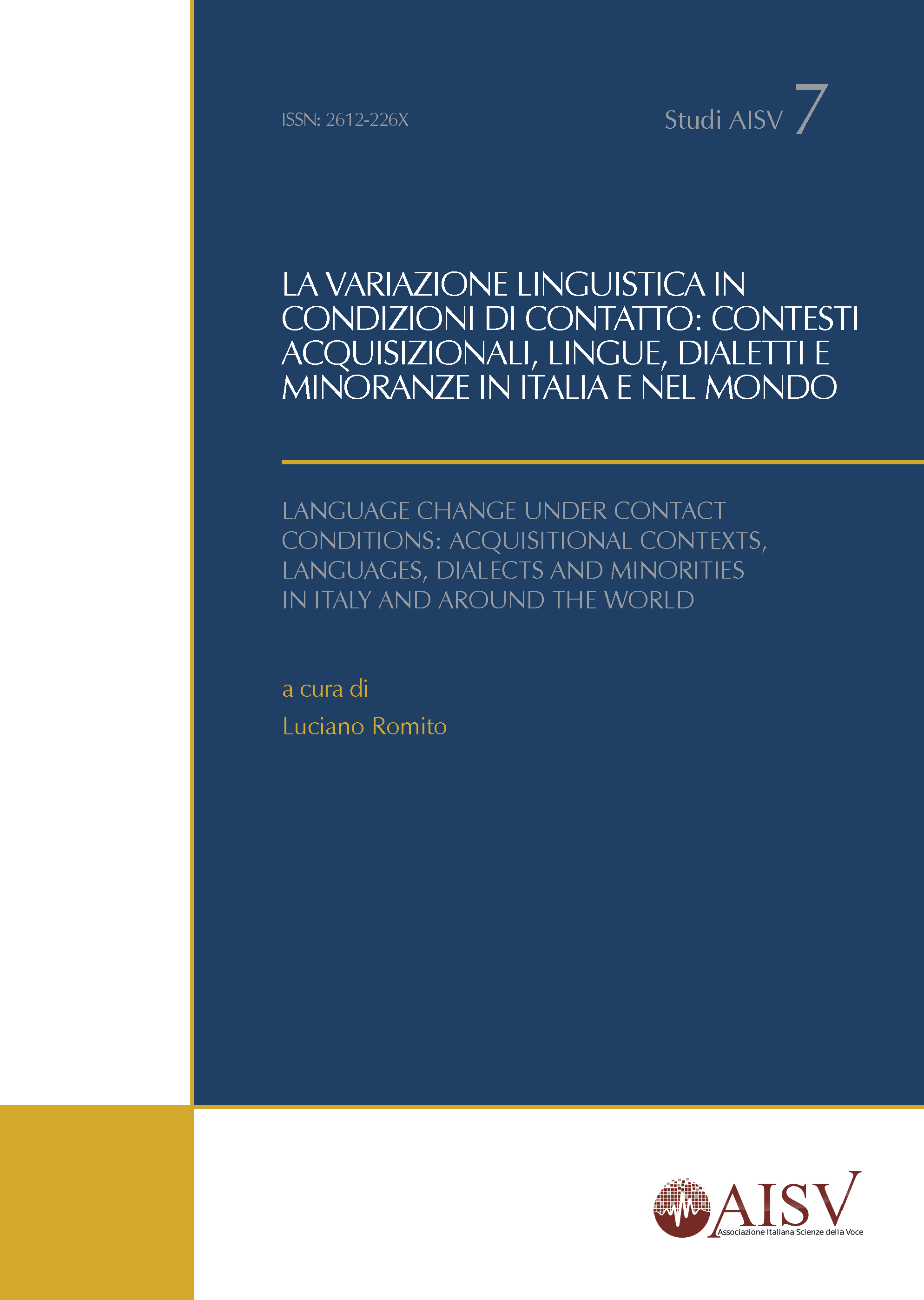Motor control in Parkinson’s Disease
An investigation on lip rounding
DOI:
https://doi.org/10.17469/O2107AISV000020Keywords:
pathological speech, Parkinson's Disease, dysarthria, speech production, labializationAbstract
Parkinson’s disease is often associated with the hypokinetic type of dysarthria, which is characterized by movements that are reduced in both amplitude and speed. As far as dysarthric speech is concerned, these features of dysarthria have been correlated with a reduction in the phonetic space used by speakers, e.g. in vowel articulation. The aim of the study described in this paper is to investigate the production of Italian high vowels by Parkinsonian dysarthric subjects, with specific attention to both the acoustic and the articulatory characteristics of their speech, by looking at formant values, amplitude of the lingual and labial gestures as well as duration and articulation rate. In particular, the discussion focuses on the acoustic and articulatory measurements (electromagnetic articulography – AG501) obtained by recording three dysarthric subjects and three healthy controls from Lecce. Results show that, in addition to the expected tendency to reduce articulatory gestures as for both their amplitude and duration, an increase concerning measures obtained for some articulators and along some axes may also be observed. Data collected in relation to tongue and lip movement suggest that gestures are modulated to carry out compensatory strategies aimed at preserving relevant linguistic features, such as the acoustic characteristics of rounded in comparison to unrounded vowels
Downloads
Published
Issue
Section
License

This work is licensed under a Creative Commons Attribution-NonCommercial 4.0 International License.





